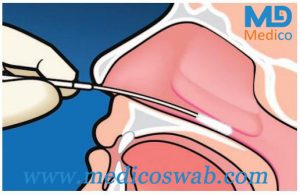影响咽拭子标本采集的因素
2020-07-30
用鼻咽拭子采集呼吸道粘膜表面样本是临床常见操作, 用于评估成人和儿童是否有呼吸道病毒或细菌感染,在新型冠状病毒感染的诊断中, 采集鼻咽拭子进行核酸检测是重要的检查方法. Patients without special contraindications of nasopharyngeal swab collection can be operated. If the patient has a recent history of nasal trauma or surgery, or has a history of obvious deviation of nasal septum, or has a history of chronic nasal obstruction and severe coagulation disorder, clinicians should be cautious.
 鼻拭子可以帮助诊断肺癌
鼻拭子可以帮助诊断肺癌
Operation
1.All patients undergoing novel coronavirus testing should wear masks, and the collection personnel should provide appropriate personal protection as required.
2.Before collecting specimens, ask patients to take off their masks and blow their noses with paper towels in order to remove excess secretions in the nasal cavity.
3.Take the swab out of the package and tilt the patient’s head slightly backward, so that the swab can reach the nasopharynx more easily through the nasal cavity. Tell the patient to close his eyes to relieve slight discomfort during operation.
4.Gently insert the throat swab along the nasal septum until a sense of resistance indicates that the swab has reached the bottom of the nasopharynx.
5.Attention should be paid to keeping the throat swab parallel to the palate during insertion. If the swab encounters resistance when passing through the nasal passages, it is necessary to retreat the swab and try to change the angle to re-enter.
6.The insertion depth of the swab should be equal to the distance from the nostril to the opening outside the ear. The Centers for Disease Control and Prevention (CDC) recommends that the swab should be placed for several seconds after reaching the bottom of the nasopharynx so that the top of the swab can absorb secretions, and then slowly remove it while rotating the swab.
















